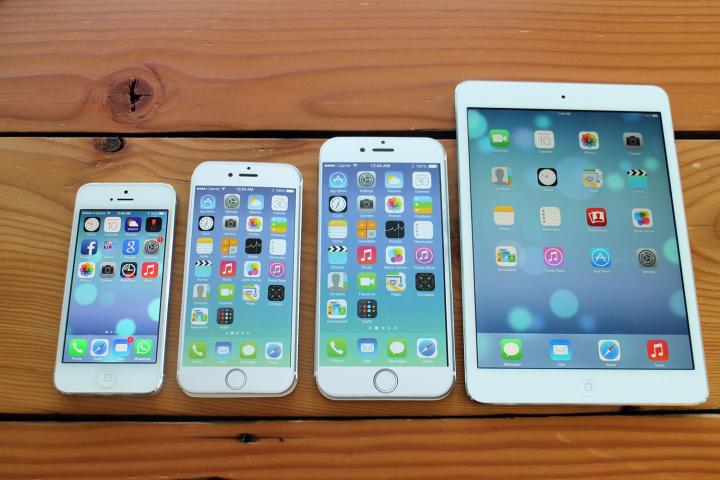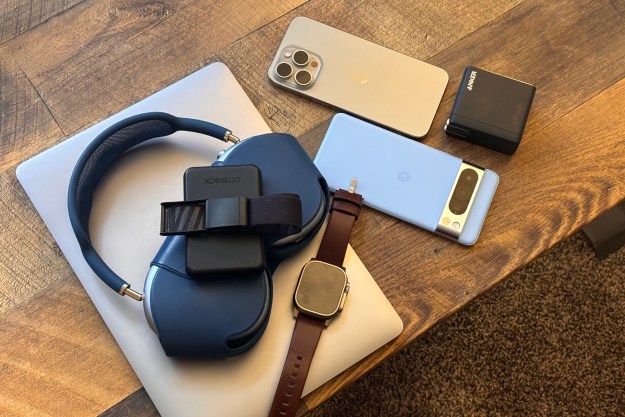
By setting up this program, Apple indirectly confirmed something that we knew already; a new iPhone will be released every year for the foreseeable future, and the company hopes that you’ll buy each and every one.
This is just one example of a philosophy that has long governed the consumer tech industry, and many others — planned obsolescence.
Best laid plans
At its core, planned obsolescence is a method of making useful products seem obsolete before this is the case, typically with the intent of selling a ‘new and improved’ version.
The need to sell more hardware is eclipsing the purpose of refinements made to the product.
There’s many ways to accomplish this. In the early 20th century, a group known as the Phoebus cartel managed to standardize the life of a lightbulb at 1,000 hours, and all it took was the threat of financial repercussions for any manufacturer that exceeded that amount.
This tactic wrung extra money out of the consumer by convincing them the product already in their home is in dire need of replacement. However, undercutting the product’s functionality isn’t the only strategy on the table.
In the 1920s, it was becoming more and more difficult for automobile manufacturers to sell their product, as the market had become saturated. Anyone who had the money and desire to purchase a car had already bought one.
General Motors president Alfred Sloan decided on a simple solution: annual model changes. Imitating a process that had already been used by bicycle manufacturers, Sloan released the 1923 Chevrolet. The car had a completely new exterior, but the chassis was unchanged. Sloan had invented the “model year,” a concept that today is so common it’s hard to imagine how cars could be sold without it. This was a crucial moment for industry, as it demonstrated consumers would purchase a new car — a considerable expenditure back then, as today — despite minimal changes.
The practice is alive and well, and has been refined by consumer technology. Today’s tech giants don’t just practice planned obsolescence; they’re founded on it.
Obsolescence of desirability
In his book The Waste Makers, social critic Vance Packard outlined the three prongs of planned obsolescence. The first is obsolescence of function, where a product is simply outmatched by a more capable replacement — and that’s something that we should all applaud, as it’s the sort of competition that benefits the consumer.
The second is obsolescence of quality, where a product is built to break down and fail over a particular span of time. It’s easy to throw around accusations of today’s items “not being built how they used to,” but in practice, this isn’t the biggest problem with today’s output.
Instead, it’s the third variety of planned obsolescence that we should be worried about: the obsolescence of desirability. This refers to the process of making the newest version of a particular product desirable, intentionally doing so to the detriment of its predecessors.
Rumors have been circulating for some time about what new functionality the iPhone 7 will offer up — and all but the most outlandish make the smartphone sound like an incremental update over the iPhone 6. Does a waterproof casing or a slightly better camera lens warrant getting rid of your working phone? No, but scores of people will put their money on the table as soon as a release date is announced.
Packard observed that “the American people themselves have been conditioned over the years to respond favorably to some kinds of obsolescence.” The Waste Makers was written more than 50 years ago, but it’s as potent as it ever was today.
The appearance of change
It’s interesting to note that Apple’s decision to implement the iPhone Upgrade Program comes at a time when the evolution of its flagship
Of course, this doesn’t mean that the phones are bad. Apple has released five iterations of the iPhone since 2014 — 6, 6 Plus, 6S, 6S Plus and SE — and all of them have received review scores of four stars or higher. However, there’s more to the story than that.
“You don’t really need the
Most of these reviews call out Apple for refusing to include features like a larger battery and waterproofing in its devices. This review of the iPhone 6 Plus suggests that its “specs aren’t much better than iPhone 5S.” Perhaps the most damning statement on the stagnation of the iPhone’s iterative development — or, conversely, the highest praise possible of Apple’s knack for planned obsolescence — comes as a lead-in to our review of last year’s model: “You don’t really need the
These reviews aren’t incorrect in their assessment of Apple’s hardware. These devices are sure to deliver a superlative experience to the first-time buyer, but they’re less apt to leave you blown away by their capabilities if you’re upgrading from an iPhone that’s a year or two old.
Yet that’s exactly what the iPhone Upgrade Program has been designed to facilitate. The plan is billed by Apple as “an easier way to get a new iPhone every year” — implying that you were inevitably going to buy each new iteration whether or not Apple made it “easy.”
That said, this ease doesn’t come free. Predictably, analysis of the program found that you’ll end up paying more for your iPhone if you opt into the plan, although you do get the added benefit of AppleCare+ protection.
This isn’t to say that Apple deserves to be disparaged for trying to turn a profit. However, we should perhaps question whether a barrage of marketing is helping us ignore the fact that product cycles have become ridiculously swift, and the difference between iterations is less apparent than ever before.
When the iPhone 3G launched, it introduced GPS functionality, 3G connectivity support and the App Store. Its successor, the 3GS, was viewed as an incremental update — and it added video recording to the phone’s capabilities. The iPhone 4 came next, with its Retina display, iOS 4.0 and a completely new physical design in tow.
It’s difficult to imagine how Apple could accomplish this sort of quantum leap with the
Breaking the product cycle
Apple makes a great example of planned obsolesce, but the company is just conforming to industry expectations. The one-size-fits-all nature of its devices makes it easy to point out the endless product cycle at work, but other manufacturers are just as guilty.
Much of the consumer experience rests on a platform of planned obsolescence. Companies don’t go into business with the intention of perfecting one product then moving on to the next; their long-term strategies revolve around supplying the same commodity for decades, employing incremental changes to keep things fresh.
Unfortunately, the task of breaking this cycle falls to the consumer. The customer is always right — especially if the customer chooses to buy a newer version of their current
However, the government could offer a helping hand. Last year, legislation was passed in France that requires companies to outline the expected lifespan of a product to consumers.
This scenario removes the most problematic element of planned obsolescence: the hoodwinking of the consumer. No one expects a device to last forever, but companies could tell us exactly how long they think a device will keep kicking. How many charges can the battery handle before it’s useless? How long will the display keep shining? How long until the plastic cracks, or the metal corrodes? Companies rarely offer specific information about any of this.
Constant evolution has allowed computers, smartphones and other tech hardware to evolve in leaps and bounds over the last thirty years. However, we’ve come to a point where the need to sell more hardware is eclipsing the purpose of any additions or refinements made to the product.
Vance Packard said it best when he declared “All the emphasis on style tends to cause the product designers and public alike to be preoccupied with the appearance of change rather than the real values involved,” — and he delivered that warning long before Apple sold 700 million iPhones.
Editors' Recommendations
- Nomad’s new iPhone case and Apple Watch band may be its coolest yet
- I’ve had the iPhone 15 Pro for six months. Here’s why it’s still amazing
- The iPhone 16’s huge redesign has leaked. Here’s what’s new
- The OnePlus 12 has one big advantage over Samsung and Apple
- Here are Apple’s secret plans for adding AI to your iPhone




